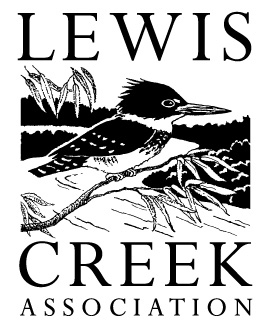Among the great blue herons and lily pads in the Town Farm Bay and LaPlatte River wetlands, volunteers spent June and July removing invasive European frogbit plants from Shelburne’s LaPlatte River, the Lower McCabe’s Brook and Charlotte’s 50-acre wetland complex at Town Farm Bay. Lewis Creek Association’s (LCA) “Water Quality Stewardship Program” invasive plant project has been coordinated every year since 2007, and is supported by LCA and the towns of Charlotte and Shelburne, Point Bay Marina, Shelburne Bay Boat Club and property owner Alexa Lewis. Native to Europe and Northern Asia, European frogbit was brought to the United States via the St. Lawrence River, where it was first planted in arboretum ponds in Ottawa. It is considered an aquatic invasive species because it grows on the water surface and out-competes native plants for sunlight and nutrients.
When friends of LCA discovered frogbit in Town Farm Bay in Charlotte in 2007, there was 50 percent cover throughout the wetland. With annual seasonal management and field work, the frogbit cover has been substantially reduced and is now maintained at about 5 percent cover. In contrast, when frogbit was discovered in the LaPlatte River and McCabe’s Brook wetlands, it had a low percent cover, providing an opportunity for “early detection, rapid response”. Though the invasive plant will never be eradicated in either location, maintaining this low population allows native plants and critters to thrive. This year, volunteers removed 1,670 pounds of frogbit from the 50-acre Town Farm Bay wetland complex, and 800 pounds of frogbit from the 77-acre LaPlatte River wetland complex. Because frogbit levels are consistently low, LCA and volunteers are now taking on the management of other invasive species. According to LCA technical advisors at VT DEC and Lake Champlain Basin Program, yellow iris and flowering rush should be the next priority. While yellow iris has a new management plan, volunteers mapped flowering rush in 2018 and began removal, eliminating 20 pounds of the rush. Next year, flowering rush and frogbit will be harvested from Town Farm Bay and the Lower LaPlatte.
LCA’s Water Quality Stewardship Program also includes the annual monitoring of the LaPlatte River, McCabe’s Brook, Thorp Brook, and Kimball Brook by South Chittenden River Watch. The sampling season is still in progress and will last through October. Volunteers collect water samples which are then analyzed by the State lab at UVM and interpreted by LCA technical consultants. This year, LCA continues to sample nutrients and solids during high flow events like heavy rain or snow melt in order to understand sources of nutrient loading to Lake Champlain while informing water quality improvement project plans. To see 2017 results, visit the LCA website at lewiscreek.org.
Not only is this water quality stewardship program important for maintaining productive, functioning, and scenic waters – it also allows residents of Charlotte and Shelburne to become involved and be advocates for water quality. The most valuable way data can be shared is by passionate people you know in your community. This program being funded through your Town budget is crucial, since it allows the whole community to take ownership in local water quality and natural resources that are so important to protect.
